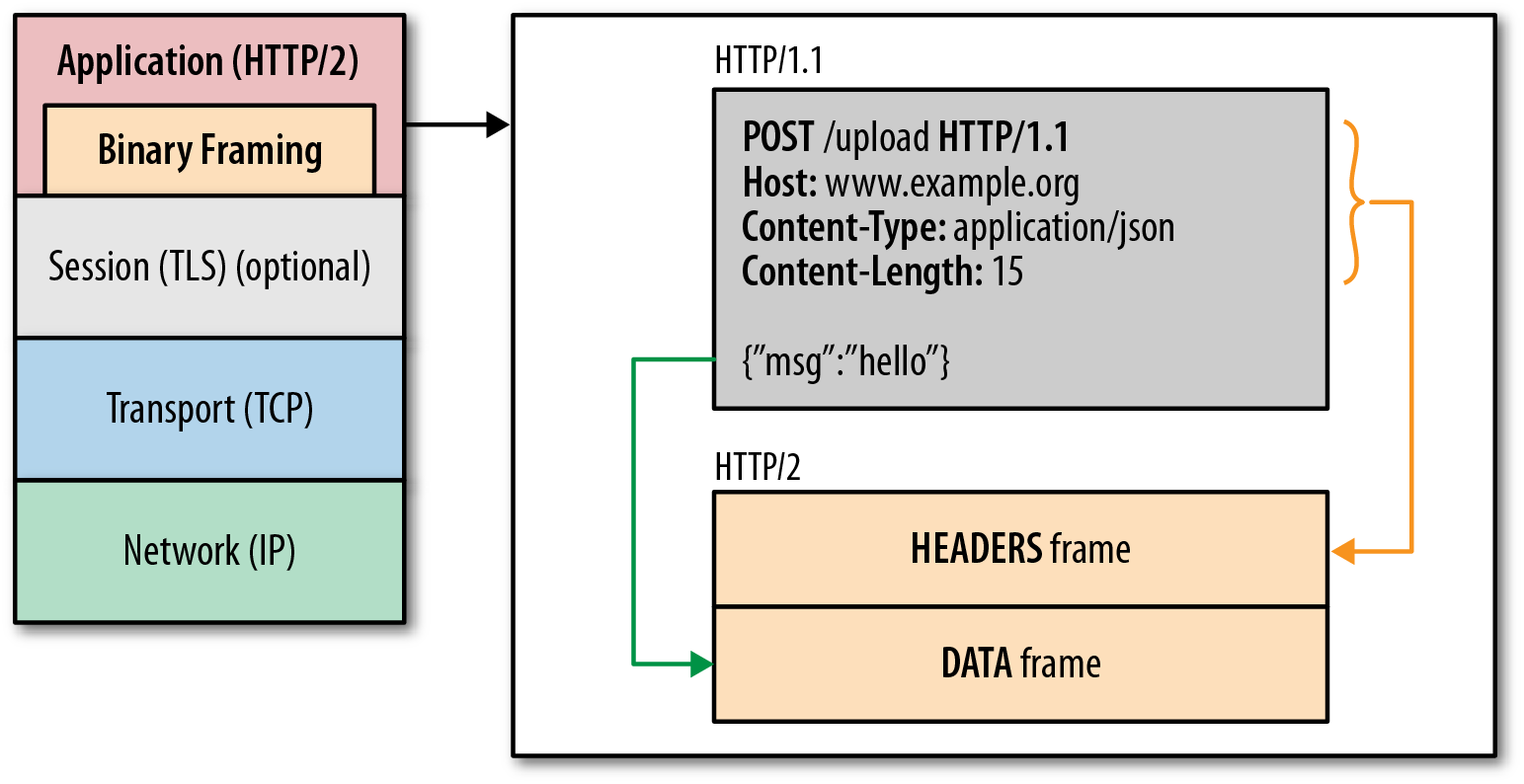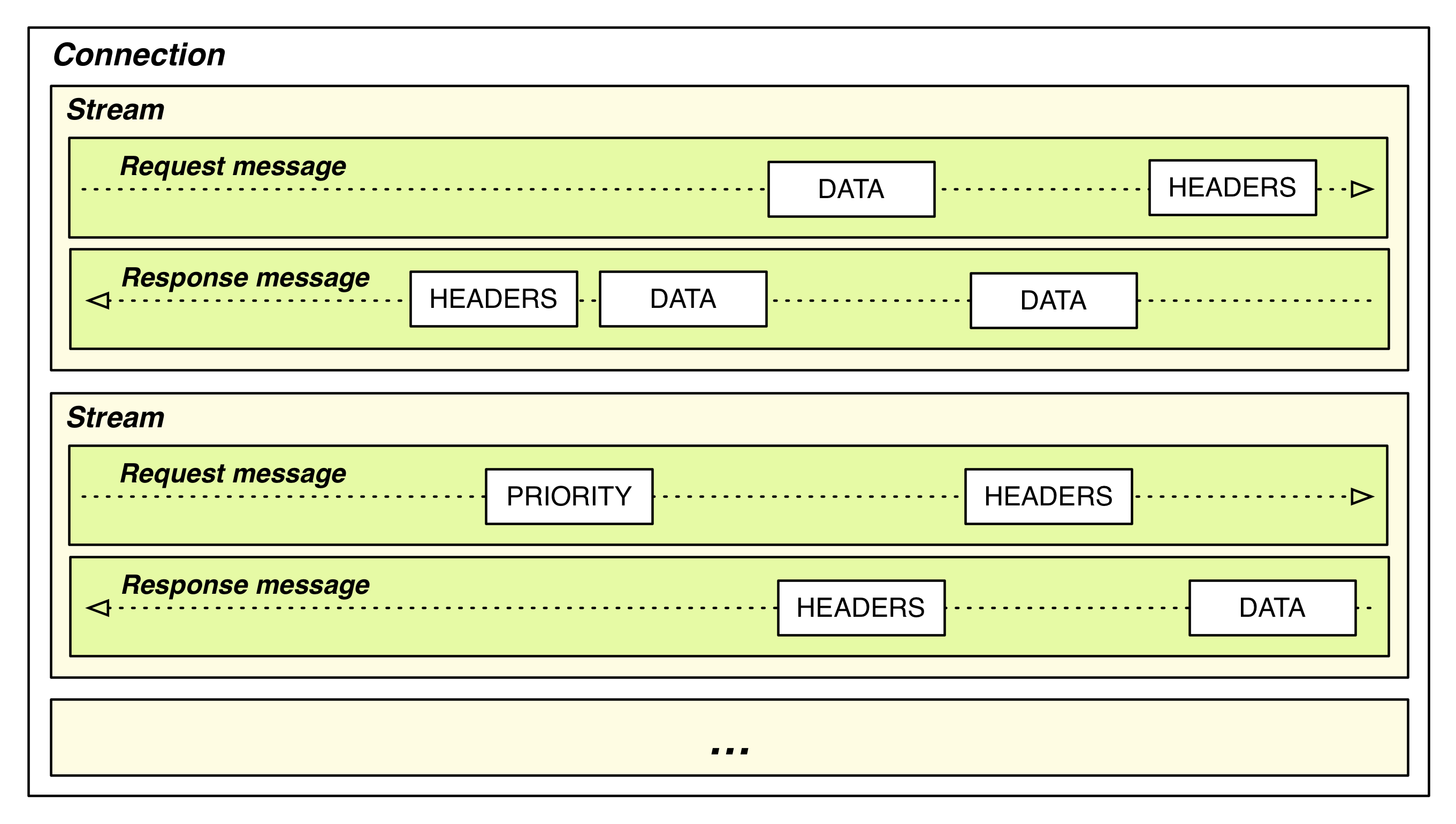High Performance Networking HTTP1 HTTP2
Chapter 11: HTTP/1 permalink
All HTTP 1.0 should be upgraded to HTTP 1.1
Summary of recommendations made in another book by Steve Souders:
- Reduce DNS lookups
- Make fewer HTTP requests
- Use a Content Delivery Network
- Add an Expires header and configure ETags
- Gzip assets
- Avoid HTTP redirects
More concisely: “eliminate and reduce unnecessary network latency, and minimize the amount of transferred bytes.”
More things:
- Add support for
keepalive, and reduce the number of required HTTP handshakes between server and a single client - Add support for HTTP pipelining so that requests are dispatched ASAP, and queueing happens on server instead
- Browser to use multiple TCP connections with the same server
- SHard resources across multiple hosts (or subdomains) for further increase parallelism
- Measure, and minimise size of HTTP headers
- Concatenation and spriting
- Resource inlining
Chapter 12: HTTP/2 permalink
HTTP/1 does not modify the core semantics of HTTP/1 in any way:
- still have the same verbs (
GET,POST, etc.) - still have headers
Aims to increase speed, and reduce latency, compared to HTTP/1:
- Compress headers automatically
- New flow control, error handling, and upgrade mechanisms
- Allows multiple concurrent connections between the same client and server
- Able to specify request priorities at the protocol level
- Take for example, gmail, which had to write this logic in client-side Javascript
- Binary message framing
- Longer lived connections, allowing better use of network capacity
Binary framing permalink

Wrap HTTP/1 text value in a binary frame, and standardise format for all variables such as white spaces and termination sequences When the binary frame is unwrapped, it may be treated identically to a HTTP/1 text value.
Streams, Messages, and Frames permalink

Each connection consists of multiple streams; each stream consists of multiple frames; multiple frames make up a single request-response pair.
?? Does each frame contain an additional HTTP/2 level header to identify which stream it belong to, and its sequence number?
Request and Response Multiplexing permalink

In summary: Many different streams, messages, and frames all share the same TCP connection, and can be sent in any order; with the recipient inspecting them to reassemble them correctly.
Stream prioritisation permalink

Streams may assign both weights and dependencies on other streams. The sender and the receiver use these to build a prioritisation tree, and use this to determine and optimised order and bandwidth allocation in transmitting each of the streams.
One Connection per Origin permalink
Self-explanatory: Since there is no need to make multiple connections to a single server any more, multiple connections are explicitly disallowed.
This optimises for numerous “bursty” connections, instead of small numbers of large “bulky” connections. This is important to remember, because it means that many of the HTTP/1 optimisation techniques such as spriting or concatenation may no longer result in performance gains.
Flow control permalink
Great, protocol-level way of fending of DoS’es! But not so much DDoS’es. Maybe.
Server Push permalink
Reduces the need to use long polling where it was necessary in HTTP/1; and also reduces the need for more simple use cases of websockets